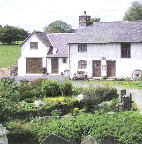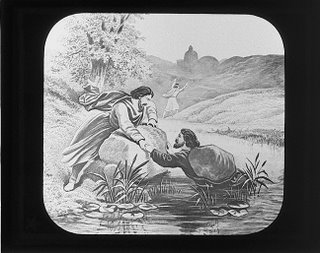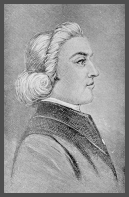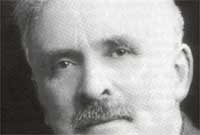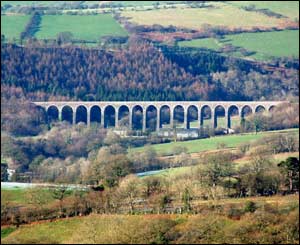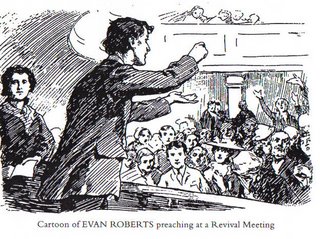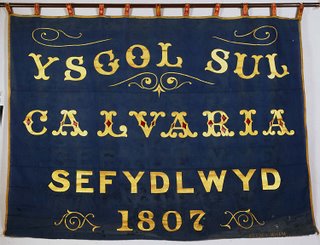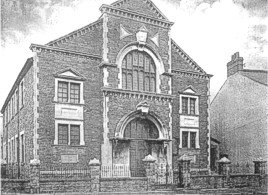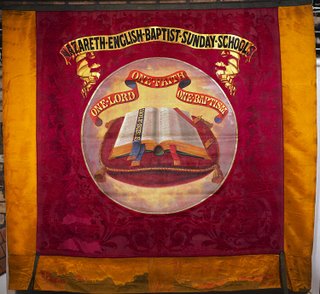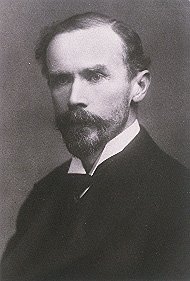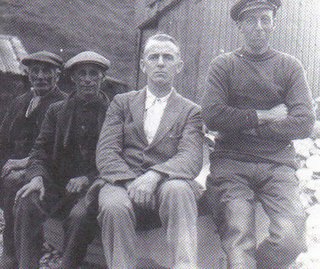
This final post on Tom Nefyn is illustrated with perhaps the most solemn sight in Wales today. A closed chapel. This one is in Colwyn Bay, but the image could be duplicated all over Wales. Tom Nefyn's case, which effectively embarrassed the Presbyterian Church of Wales (Calvinistic Methodists) into dropping all pretence at discipline. In my previous post, I examined the general lessons that may be learned from the case.
Tom Nefyn did not empty his chapel. In fact, his ministry at Ebenezer, Tumble, brought members
back into the church. If we were to judge Tom Nefyn by results, we should, like his church, have to support him. This is another reason why our faith must be firmly grounded in doctrine.
However, while Nefyn's preaching was dramatic, and his social activism endeared him to many in the Tumble area, his broader ministry was less successful. This is best illustrated by the August 1928 'Keswick in Wales' Conference at Llandrindod Wells. The third encounter between the two men saw them scheduled opposite one another. Iain Murray describes a 'buzz' of excitement at Sunday Breakfast, Dr. Martyn Lloyd Jones was astonished to be told that: 'If we believed in betting, the people would be betting!'
The two men met and conversed politely before their respective preaching engagements. Tom Nefyn, preaching at the Albert Hall, preached an extreme liberal sermon before a large congregation, in which the former evangelist ridiculed both the deity of Christ and His resurrection. Lloyd Jones, preaching to an equally
large congregation, preached the old, old story. In the evening, the Albert Hall was half-empty, while the chapel in which Lloyd-Jones preached was packed to the rafters, even the pulpit stairs having to be pressed into service as extra seats!
Remembering this, the Carmarthenshire Presbytery, seeking to calm the situation after Tom Nefyn's excommunication, invited Dr. Martyn Lloyd-Jones to preach at a special meeting in Water-Street Church, Carmarthen on the last Thursday in September. For fifty-one years, this continued, with the same preacher. Among those affected by the preaching over these years was the Rev. Dafydd Morris, minister of the Evangelical Church in Carmarthen. Even in the darkest moments of the Church's history, God has his people and his prophets. One of the effects of the Tom Nefyn controversy is the Church in the old Presbyterian College, and its witness.
Further reading:
Gwyn Davies,
A Light in the Land: Christianity in Wales 200-2000 (Bryntirion). Short, popular account.
Noel Gibbard:
Taught to Serve: The History of Barry and Bryntirion Colleges (Bryntirion). This book describes the development of the work begun at Porth.
Iain H. Murray,
D. Martyn Lloyd-Jones: The First Forty Years (Banner of Truth). This contains an excellent account of Welsh Calvinistic Methodism between the wars I have read.
D. Densil Morgan,
The Span of the Cross: Christian Religion and Society in Wales 1914-2000 (University of Wales Press). The fullest modern account of the Tom Nefyn Controversy is to be found on pp.122-8. Sadly, this book is written from an explicitly anti-evangelical viewpoint.
Robert Pope,
Building Jerusalem: Nonconformity, Labour and the Social Question in Wales, 1906-1939 (University of Wales). Tom Nefyn is featured prominently in this book.
Robert Pope,
Seeking God's Kingdom: The Nonconformist Social Gospel in Wales 1906-1939 (University of Wales Press). Similar to the above, equally, this book is more sympathetic than Densil Morgan.
Labels: Tom Nefyn Williams
